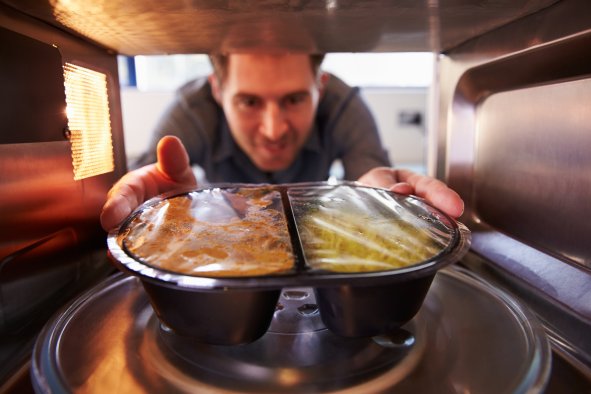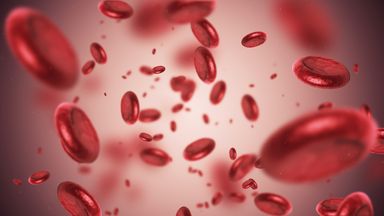Mayonnaise is more commonly applied in scientific contexts to middle-school demonstrations on how emulsions are made. However, researchers at Lehigh University in Pennsylvania are utilizing its physical properties with the hope of producing nuclear fusion technologies.
The goal is to mimic the way the sun releases energy in order to harness a cleaner, near-endless means of power. By quite literally squeezing the condiment, the team at Lehigh was able to study how a material with plasma-like properties responds to movement and pressure.
"We're still working on the same problem, which is the structural integrity of fusion capsules used in inertial confinement fusion, and Hellmann's Real Mayonnaise is still helping us in the search for solutions," Lehigh engineering professor Arindam Banerjee said in a statement.
What is being replicated here is a process called inertial confinement fusion.
A small, solid pellet of fuel compressed to extremely high density and temperature creates fusion power in the brief moment before it disintegrates.
The idea is to create a small, controlled version of the same process that powers the sun, with the goal of producing more energy than what was used to compress the pellet.
In order to achieve the desired simulation, a jar of mayonnaise is spun around at up to 150 rpm in a custom-made rotator lab. It took five years for students at Lehigh to complete this space in 2019, and it's the only one of its kind.
A better understanding of how the mayo "fuel" reacts will continue to grow through refining to the point where the machines reach even faster speeds.
The cornerstone of this project is observing how the plasma substitute deforms under pressure and what happens when it returns to its original shape.
How it reacts to those conditions will inform future research on how to stop the matter from excessive hydrodynamic instability—wherein the fluid becomes unstable, leading to uncertain behaviors and a loss of energy efficiency.
Admittedly, what is happening here is operating on a small scale.
But it's the start of mechanical engineering's pursuit of moving toward a goal once thought to be impossible in nuclear fusion.
"We use mayonnaise because it behaves like a solid, but when subjected to a pressure gradient, it starts to flow," said Banerjee.
"At those extremes, you're talking about millions of degrees Kelvin and gigapascals of pressure as you're trying to simulate conditions in the sun. One of the main problems associated with this process is that the plasma state forms these hydrodynamic instabilities, which can reduce the energy yield."
Banerjee and his team see themselves as another cog in the global effort to make nuclear fusion a reality.
"We're trying to enhance the predictability of what would happen with those molten, high-temperature, high-pressure plasma capsules with these analog experiments of using mayonnaise in a rotating wheel."
"We're all working towards making inertial fusion cheaper and therefore, attainable."
References
Boyaci, A., & Banerjee, A. (2024). Transition to plastic regime for Rayleigh-Taylor instability in soft solids. Physical Review E, 109(5), 055103. https://doi.org/10.1103/PhysRevE.109.055103
Do you have a tip on a science story that Newsweek should be covering? Do you have a question about nuclear energy? Let us know via science@newsweek.com.
Disclaimer: The copyright of this article belongs to the original author. Reposting this article is solely for the purpose of information dissemination and does not constitute any investment advice. If there is any infringement, please contact us immediately. We will make corrections or deletions as necessary. Thank you.



